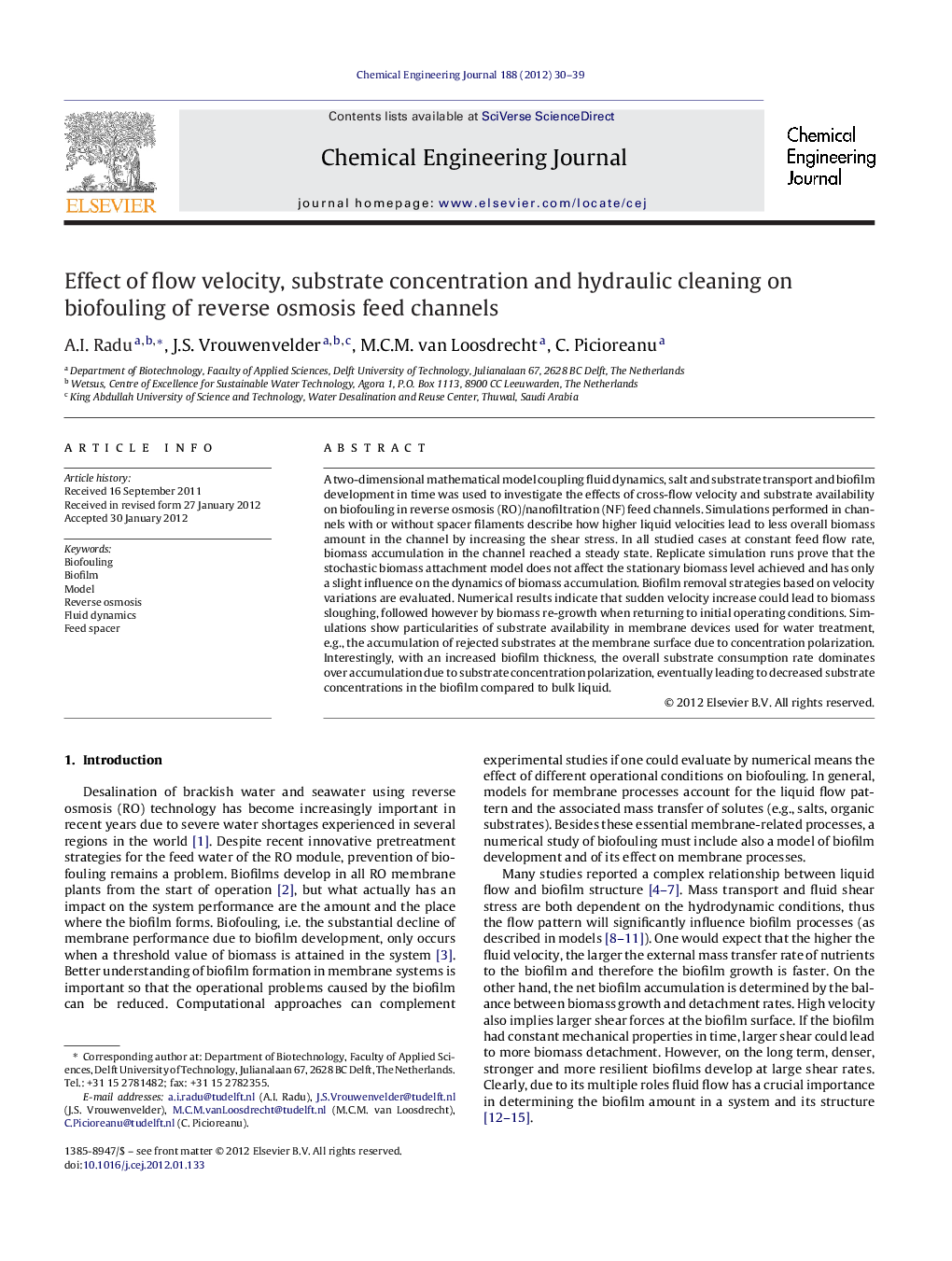| Article ID | Journal | Published Year | Pages | File Type |
|---|---|---|---|---|
| 150008 | Chemical Engineering Journal | 2012 | 10 Pages |
A two-dimensional mathematical model coupling fluid dynamics, salt and substrate transport and biofilm development in time was used to investigate the effects of cross-flow velocity and substrate availability on biofouling in reverse osmosis (RO)/nanofiltration (NF) feed channels. Simulations performed in channels with or without spacer filaments describe how higher liquid velocities lead to less overall biomass amount in the channel by increasing the shear stress. In all studied cases at constant feed flow rate, biomass accumulation in the channel reached a steady state. Replicate simulation runs prove that the stochastic biomass attachment model does not affect the stationary biomass level achieved and has only a slight influence on the dynamics of biomass accumulation. Biofilm removal strategies based on velocity variations are evaluated. Numerical results indicate that sudden velocity increase could lead to biomass sloughing, followed however by biomass re-growth when returning to initial operating conditions. Simulations show particularities of substrate availability in membrane devices used for water treatment, e.g., the accumulation of rejected substrates at the membrane surface due to concentration polarization. Interestingly, with an increased biofilm thickness, the overall substrate consumption rate dominates over accumulation due to substrate concentration polarization, eventually leading to decreased substrate concentrations in the biofilm compared to bulk liquid.
Graphical abstractFigure optionsDownload full-size imageDownload as PowerPoint slideHighlights► 2-d micro-scale/numerical model for biofouling under different operational conditions. ► At constant inlet flow rate a steady state is reached for biomass amount in the feed channel. ► Model results suggest that at high liquid flow rates, the higher shear leads to more detachment, thus to thinner biofilms. ► Permeate flux decline is correlated with the amount of biomass in the channel. ► Reproducibility of biofouling simulations tested for different flow velocities and attachment rates.
